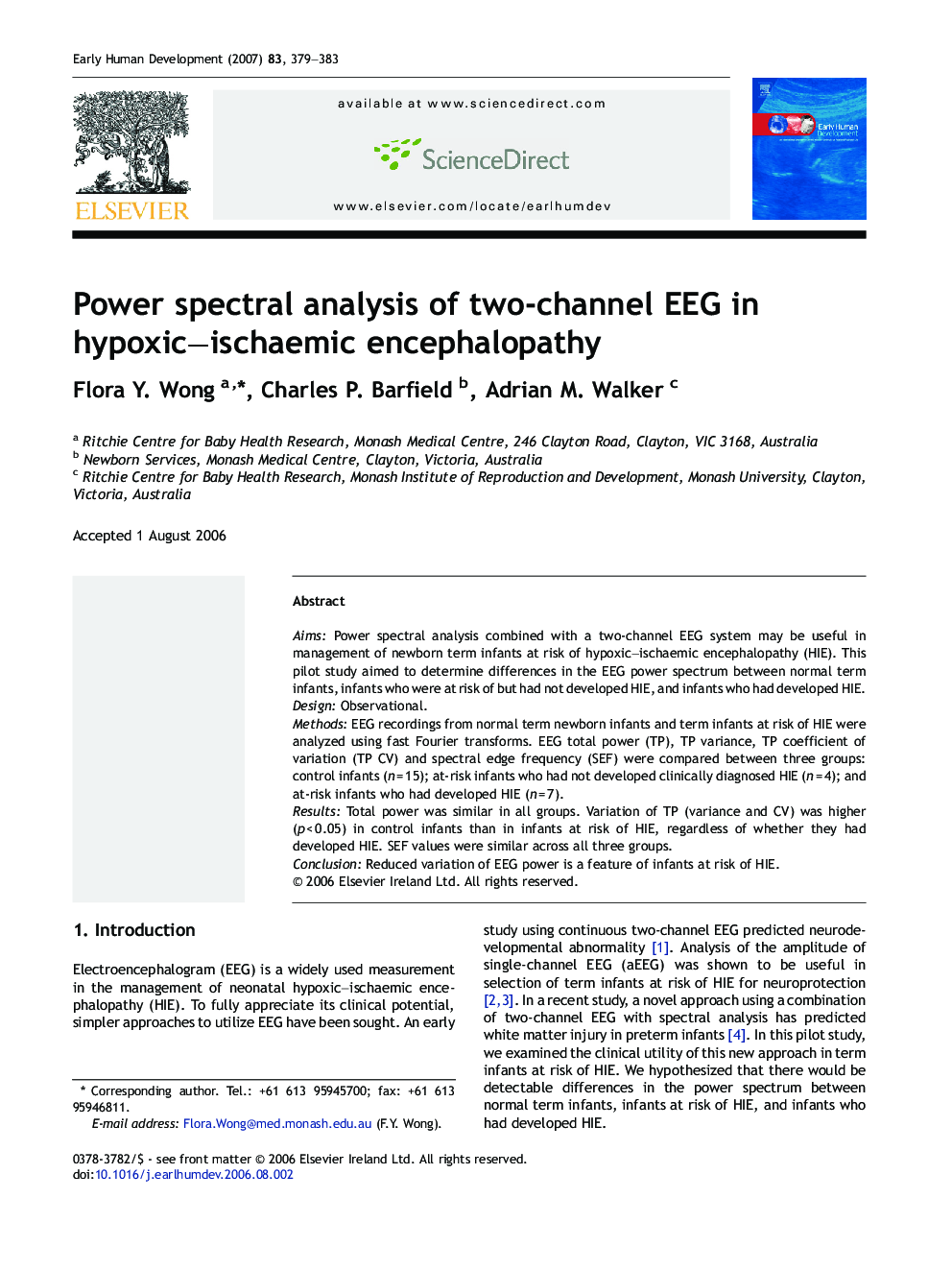| Article ID | Journal | Published Year | Pages | File Type |
|---|---|---|---|---|
| 3917722 | Early Human Development | 2007 | 5 Pages |
AimsPower spectral analysis combined with a two-channel EEG system may be useful in management of newborn term infants at risk of hypoxic–ischaemic encephalopathy (HIE). This pilot study aimed to determine differences in the EEG power spectrum between normal term infants, infants who were at risk of but had not developed HIE, and infants who had developed HIE.DesignObservational.MethodsEEG recordings from normal term newborn infants and term infants at risk of HIE were analyzed using fast Fourier transforms. EEG total power (TP), TP variance, TP coefficient of variation (TP CV) and spectral edge frequency (SEF) were compared between three groups: control infants (n = 15); at-risk infants who had not developed clinically diagnosed HIE (n = 4); and at-risk infants who had developed HIE (n = 7).ResultsTotal power was similar in all groups. Variation of TP (variance and CV) was higher (p < 0.05) in control infants than in infants at risk of HIE, regardless of whether they had developed HIE. SEF values were similar across all three groups.ConclusionReduced variation of EEG power is a feature of infants at risk of HIE.
